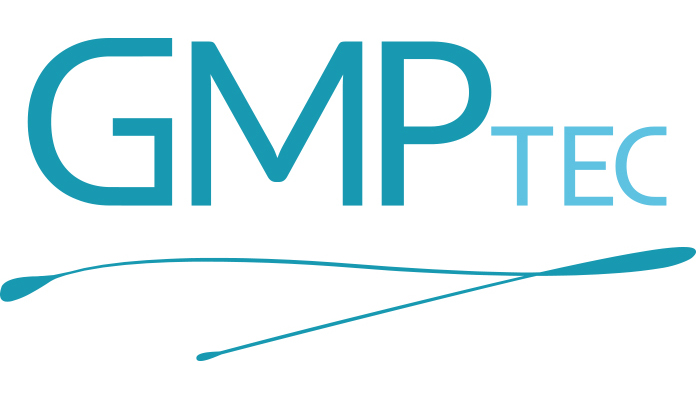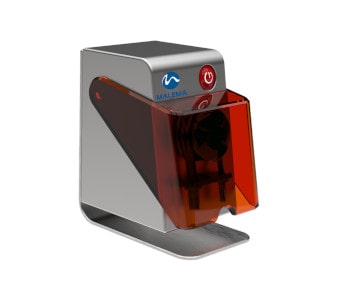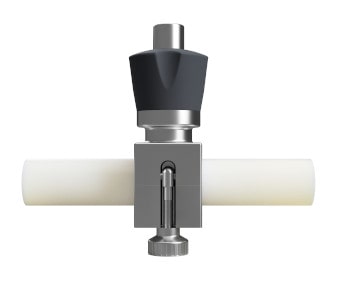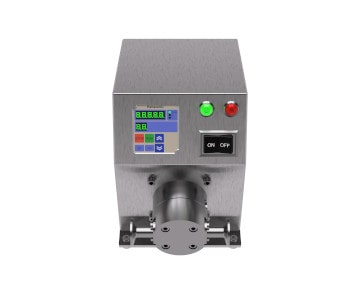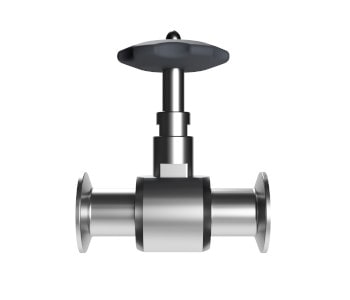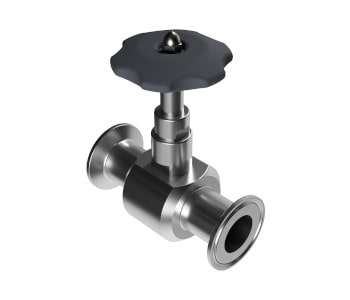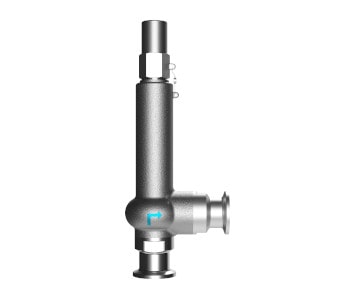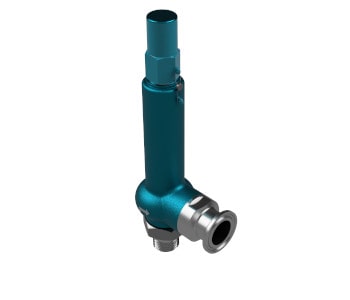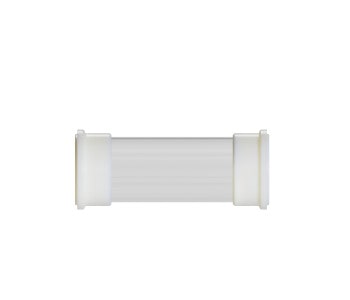Yes, the producer Rubberfab offers the TorqueRite Portfolio. This is basically a hexagon nut, which is positioned and bolted down on the clamp instead of the thumb screw. An integrated torsional mechanism ensures, that it is always screwed in place with the same torque. Moreover, there is the Smart Clamp. Here it can be initialized, how much the clamp tightens. Then, the clamp can be screwed in place or loosened by only half a turn at the thumb nut.
Piping Components
Our selection of Piping Components for cGMP processes is suitable for processes manufacturing as well as for process units that support production (e.g. heat exchanging devices, steam systems, etc.). GMPTEC mainly offers equipment technologies based on the Tri-Clamp connection method. However, on request we are pleased to offer further connections following for example DIN 11864, Ingold, dairy fittings and more.
Process and Piping Components
Our reusable components, made of stainless steel and sturdy plastic material, are not only used in our vessel technology but also in piping technology. At equal forms of construction, the stainless-steel fittings, valves for sampling, ready-for-use tubings and manometers can be used in a piped unit as well as on a vessel. GMPTEC Process and Piping Components hold the properties of good cleanability, high chemical resistance and a big range of temperature. All these properties are explicitly important for the critically and continually carried out cleaning processes (CIP, clean in place) and sterilization (sterilization in place). Piping and Process Components are such as process and control Valves, pipes, assembled tubes, TC clamps, Gaskets and further Piping Components belong to the components that can be connected by Tri-Clamps. All components are of course also available as welding items.
In nearly every GMP production there are not only the process tubes, through which the products flow, but systems for WFI (Water for Injection), PW (Purified Water) and N2 (nitrogen), as well as the earlier mentioned steam systems, too, which are necessary subprocesses to be able to run the fluid manufacturing. The described systems need to contain a certain amount of Piping Components, that are GMP conform, in order to ensure the connection and compatibility with the manufacturing process.
Information about the assembly group and components for process systems
- Valves and flange pressure range from –1 up to 7 bar
- 0°C to 131°C temperature range
- Used gasket materials are EPDM, Silicone, PTFE, Buna, Viton and Kalrez
- Steel: 1.4404 – 316L, 1.4435 and more on request
- Surface finish is depending on the type of product
Piping Components are conform to:
- USP Class VI (plastics)
- FDA conformity (plastics)
- 3.1 certification (stainless steel)
- Certification of re-marking (stainless steel)
- Surface finish of RA < 0,8 µm bis RA < 0,2µm
- IP protection
- CE conformity statement
- Ex protection of explosion (please mention in request)
Frequently asked questions regarding Piping Components:
A movement like in the filling is being compensated by hoses. If the line needs to be sturdy and reusable like a stainless-steel tube, you can find solutions like our strengthened PFA tubing. It is reusable, chemically inert and has the necessary flexibility.
Together we can develop a bigger valve block as a solution. This way the control path and therefore the entire valve technique can be concentrated in one massive stainless-steel housing. The valve heads and membranes can be installed to single housing. Next, all the valves can be laser marked to simplify their identification. This reduces the amount of junctions of individual valves.
